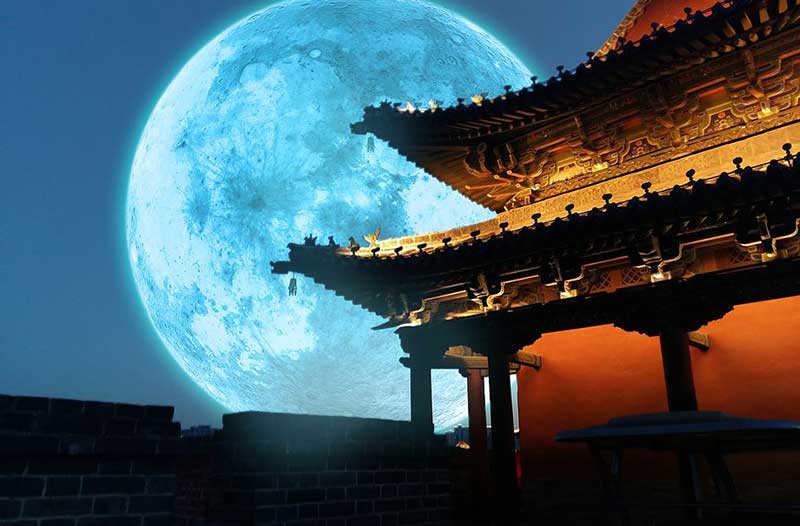- Chengdu recently announced plans to launch an artificial moon into the sky
- There are concerns that this moon could have negative effects on the human and animal population
- How viable is this artificial moon technology?
Given the speed at which innovations develop, the tech world can be called anything but boring or tedious. New, sustainable alternatives to fossil fuels are always good news, smart tech becoming even smarter is amazing – but not many novelties make much of an impact on digital natives. In fact, hardly anything can truly boggle their mind nowadays. This, however, isn’t the case with the latest news coming from Chengdu, one of China’s smartest cities, which plans to place an artificial moon in Earth’s orbit.
Chengdu recently announced plans to launch an artificial moon into the sky
Wu Chunfeng, the head of the Aerospace Science and Technology Microelectronics System Research Institute, the private space contractor in charge of the project, recently announced plans to launch an illumination satellite into the sky above Chengdu, a city with 14 million inhabitants located in China’s southwestern province of Sichuan. Positioned 500 kilometres above the Earth, the satellite will act as an artificial moon, reflecting sunlight back towards the city and illuminating its streets at night. This artificial moon will emit light that will be eight times as bright as that of the real moon and will be able to illuminate an area between 10 and 80 kilometres in diameter. That should be enough to replace all of the streetlights that currently illuminate Chengdu at night, significantly cutting the city’s energy consumption and allowing it to save approximately $2.8 billion dollars in the first five years.

However, very few technical details are known about the satellite at this time. What we know is that the satellite will feature a highly reflective coating and solar panel-like wings with adjustable angles, which will allow the researchers to control the range of the illumination down to a few dozen metres. If everything goes according to plan, the first artificial moon will be ready for launch by 2020, followed by three more in 2022. “By then, the three huge mirrors will divide the 360-degree orbital plane … illuminating an area for 24 hours continuously,” says Wu.
There are concerns that this moon could have negative effects on the human and animal population
Not everyone is convinced this is such a good idea, though. Many people are concerned that the artificial light could disrupt the activities of Chengdu’s nocturnal animals, and interfere with the circadian rhythms of the city’s inhabitants. It could also create problems for astronomers, because the additional light will make stars much harder to see. “The Chengdu ‘artificial moon’ would have the effect of significantly increasing the nighttime brightness of an already light-polluted city, creating problems for both Chengdu’s residents, who are unable to screen out the unwanted light, as well as for the urban wildlife population that can’t simply go inside and close the shutters,” says John Barentine, the director of public policy at the International Dark-Sky Association. “This potentially creates significant new environmental problems with what, at first, seems like a novel approach to an already solved problem.” According to Barentine, the artificial moon could potentially increase the illumination level on the ground by a factor of 47. However, according to Kang Weimin, the director of the Institute of Optics of the Harbin Institute of Technology, there’s no reason for concern, as the satellite will only emit a dusk-like glow, which shouldn’t adversely affect Chengdu’s animals or its human population.
How viable is this artificial moon technology?
However, there may be an even bigger problem with the whole idea. According to satellite experts, what the Chinese are trying to do is not only beyond ambitious; it’s actually downright impossible. “Their claim for 1 LEO [Low earth orbit] sat at [300 miles] must be a typo or misinformed spokesperson,” says Ryan Russell, an associate professor of aerospace engineering at the University of Texas at Austin. “The article I read implied you could hover a satellite over a particular city, which of course is not possible.” A satellite positioned that low simply wouldn’t be able to stay in one place. Instead, it would circle around the Earth at a speed of thousands of kilometres per hour, which means that every location it passes over would be illuminated for less than a second. To remain stationary, a satellite would have to be positioned at least 35,000 kilometres away from the Earth. However, at that distance, you’d also need a much larger reflective surface if you want people on Earth to be able to see its light. Of course, rocket thrusters could also be used to keep the satellite in place, but those would require constant refueling, which would significantly increase the costs and basically defeat the whole purpose of the project.
The quest for alternative, more sustainable energy sources is an admirable one, but is creating an artificial moon really the way to go about it? With so many question marks about the viability of the technology and potential negative effects on both humans and animals, we need to ask ourselves: is this actually necessary? Light pollution is already a major problem for many cities around the world, and adding another source of light to the night sky could actually create more problems than solutions.
Share via:


